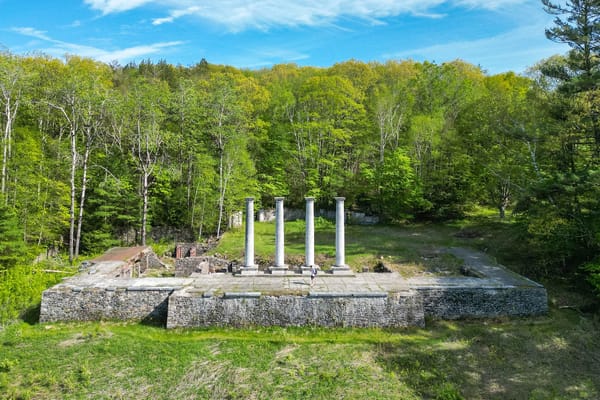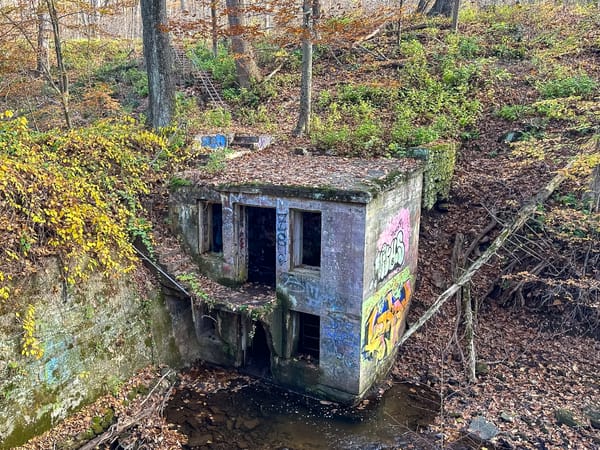Battery Crittenden (Jamestown, RI)
The abandoned Battery Crittenden can be found above Narragansett Bay within Fort Wetherill State Park in Jamestown, Rhode Island.
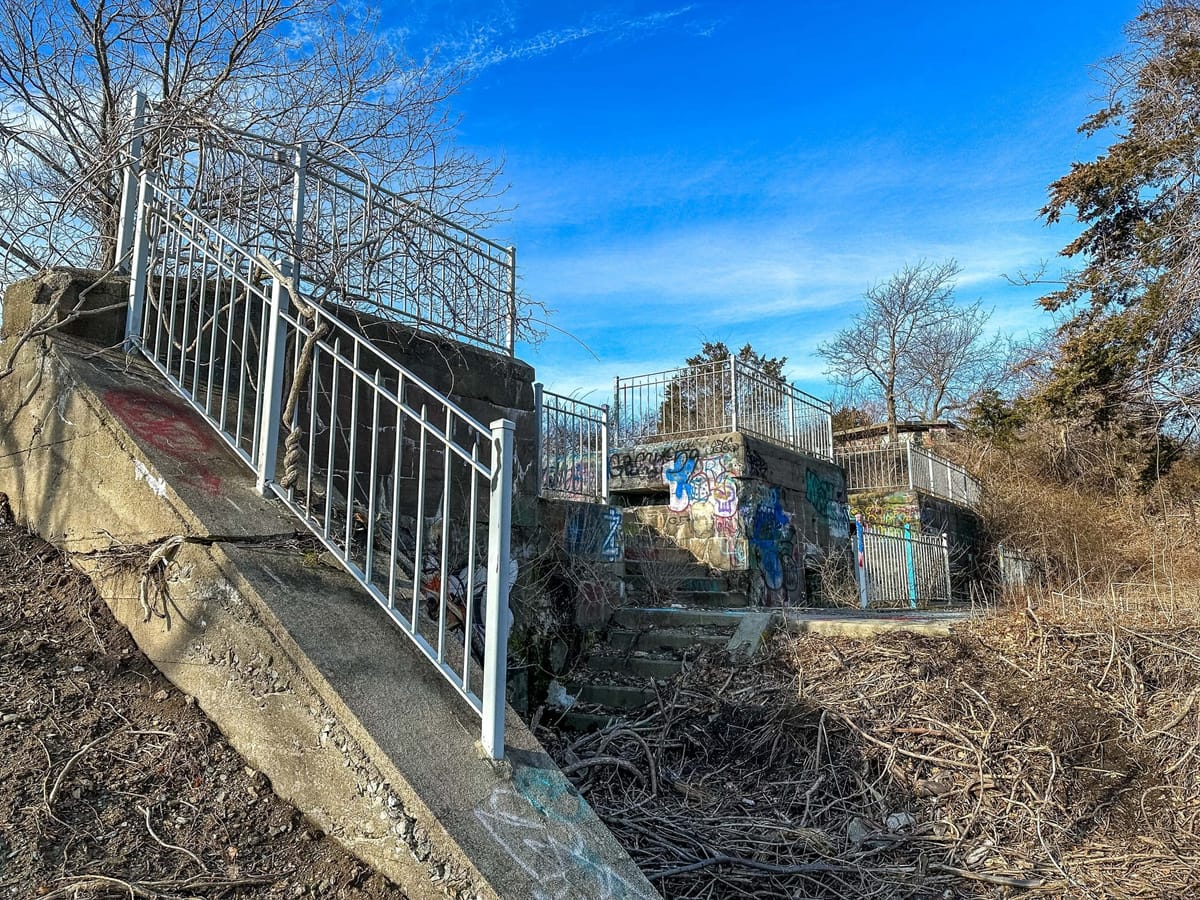
Perched high above Narragansett Bay within Fort Wetherill State Park in Jamestown, Rhode Island, the weathered concrete remains of Battery Crittenden offer a window into America’s early 20th-century coastal defenses. Built during the Endicott Period (1890–1910) — a time when the U.S. modernized its fortifications with steel and reinforced concrete — the battery once played a crucial role in guarding the entrance to the bay.
Today, Battery Crittenden stands abandoned but remarkably intact, inviting visitors to step back into a chapter of history that helped shape Rhode Island’s shoreline defenses.
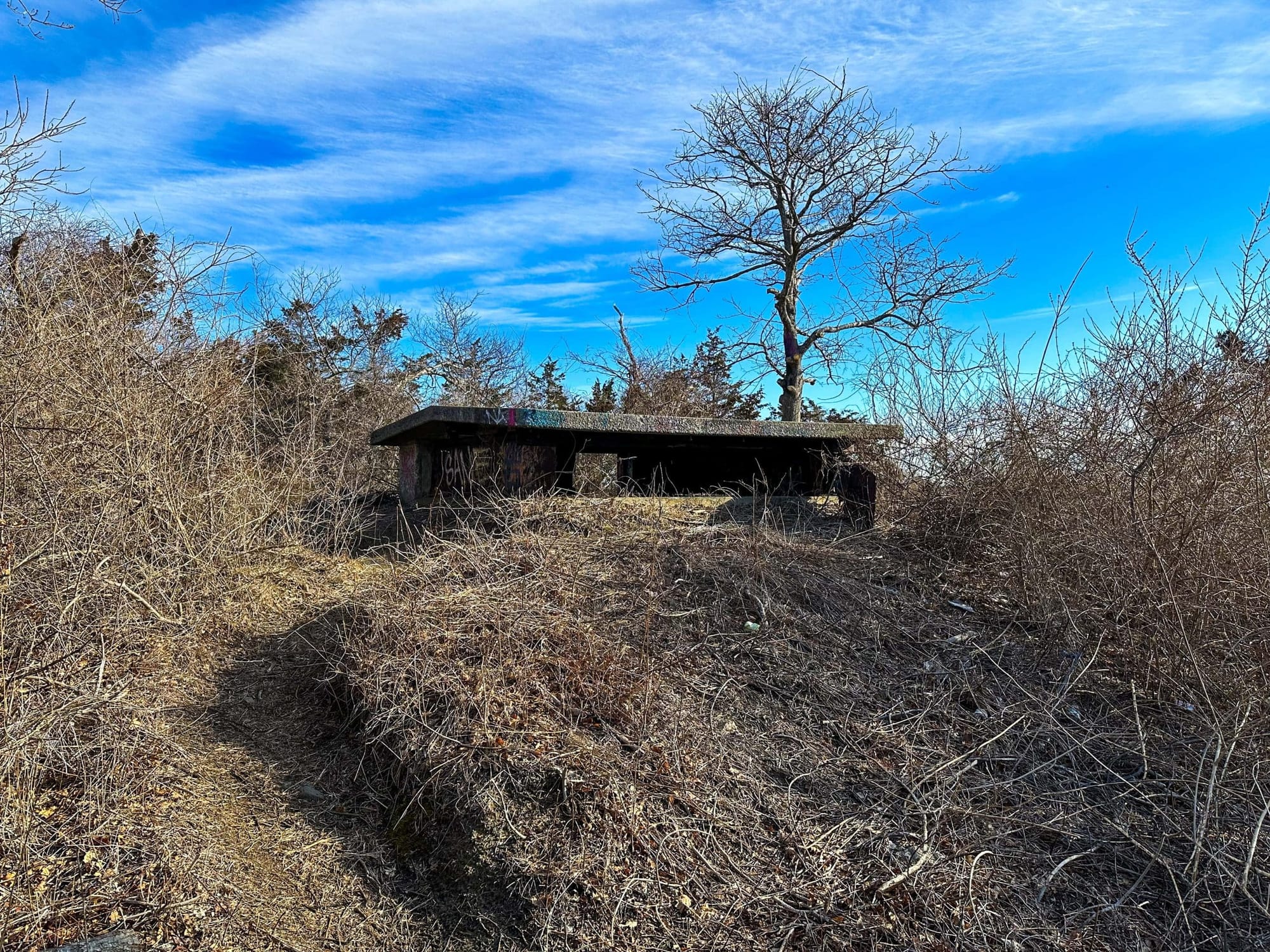
The Establishment of Fort Wetherill and Battery Crittenden
After the Civil War, new artillery and armor rendered brick forts obsolete. To respond, the Endicott Board, established in 1885, recommended a nationwide program of modern coastal fortifications. The resulting Endicott System reshaped America’s harbors between 1890 and 1910 — and Fort Wetherill in Jamestown became one of its crown jewels.
Construction of Battery Crittenden began in June 1901 and finished in July 1902. The U.S. Army Coast Artillery officially took control on May 7, 1908, integrating it into the Harbor Defenses of Narragansett Bay.
The battery was named on May 25, 1903, in honor of 2nd Lieutenant John J. Crittenden of the 20th U.S. Infantry, who was killed on June 25, 1876, at the Battle of the Little Bighorn in Montana.
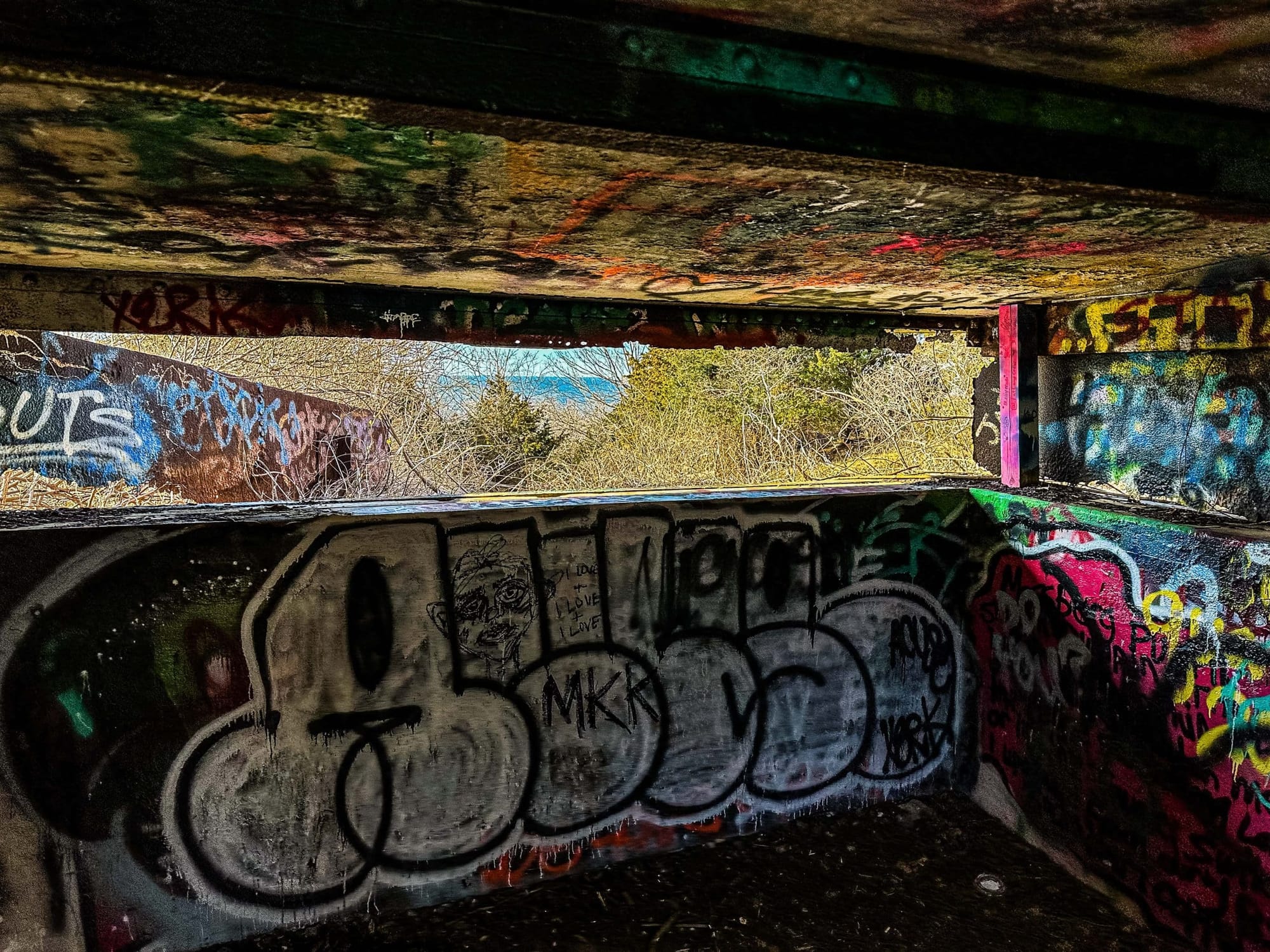
Design and Armament
Battery Crittenden followed the classic two-story Endicott-Era design:
- Upper Level: Two 3-inch M1902 guns on M1902 Barbette carriages
- Lower Level: Two magazines for storing shells and powder
Unlike larger installations, Battery Crittenden did not have shell or powder hoists, so ammunition had to be carried manually up to the guns. The design, while labor-intensive, reflected the practical engineering of the time — strong, efficient, and built for close-range coastal defense.
A small fire-control post on the western side of the structure coordinated targeting data for the guns, linking Battery Crittenden with other defensive positions throughout Fort Wetherill.
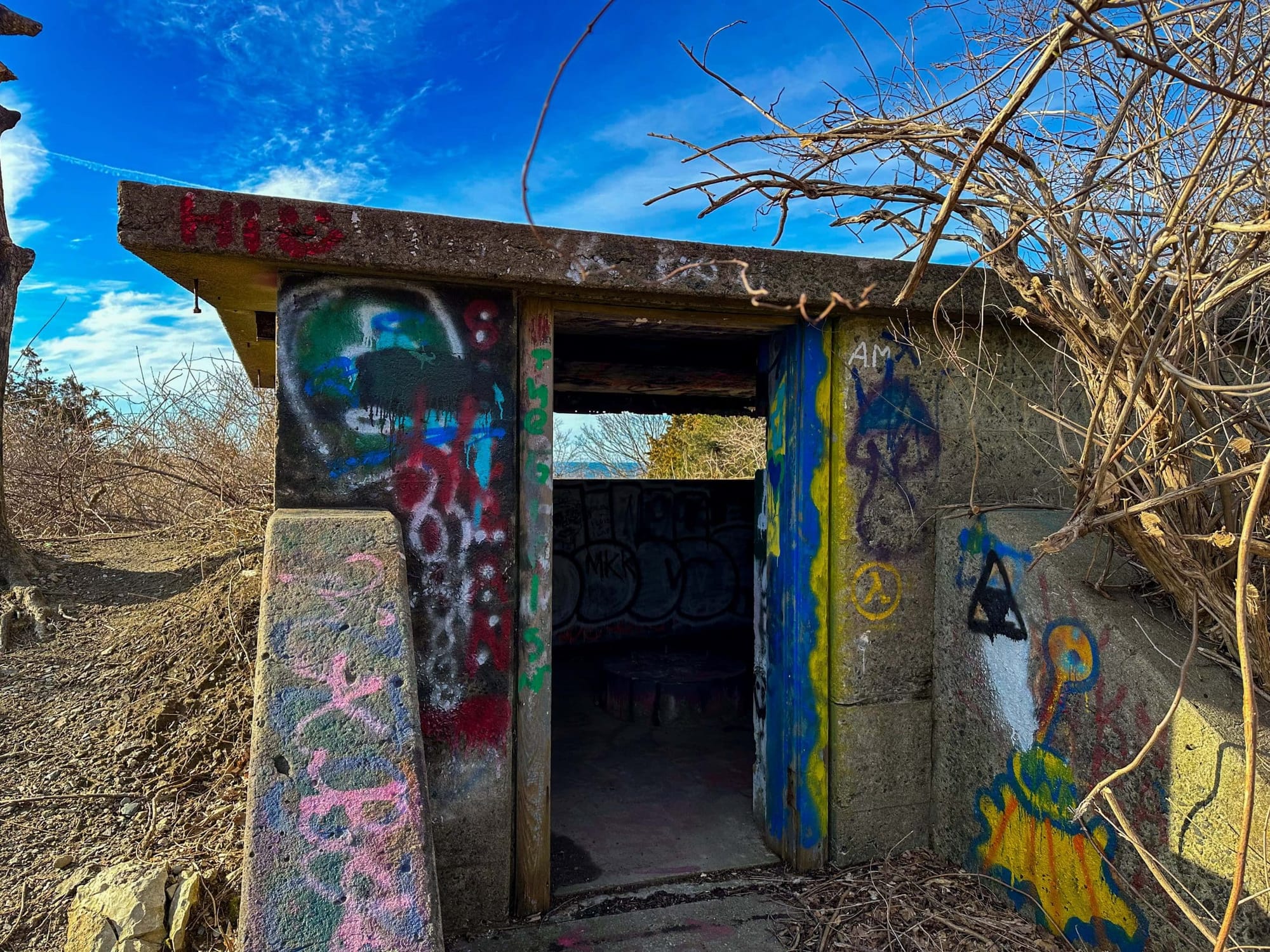
Service Through the World Wars
World War I
During WWI, the U.S. Army repurposed many coastal guns for use on European battlefields. Battery Crittenden, however, was not affected — its M1902 guns remained in place throughout the war and escaped the widespread 1920 disarmament that deactivated many Endicott batteries nationwide.
The Interwar Years
On February 26, 1925, the Army ordered Battery Crittenden’s original M1902 guns and carriages removed and placed into storage. Two months later, in April 1925, the battery received new M1903 guns and M1903 carriages transferred from Battery Belton at Fort Adams in Newport — giving the installation a new lease on life.
World War II
Throughout World War II, Battery Crittenden remained operational, serving as part of Fort Wetherill’s expanded coastal defense system. Following Japan’s surrender, the battery was declared surplus, and on March 14, 1946, its guns and carriages were permanently removed, marking the end of more than four decades of service.
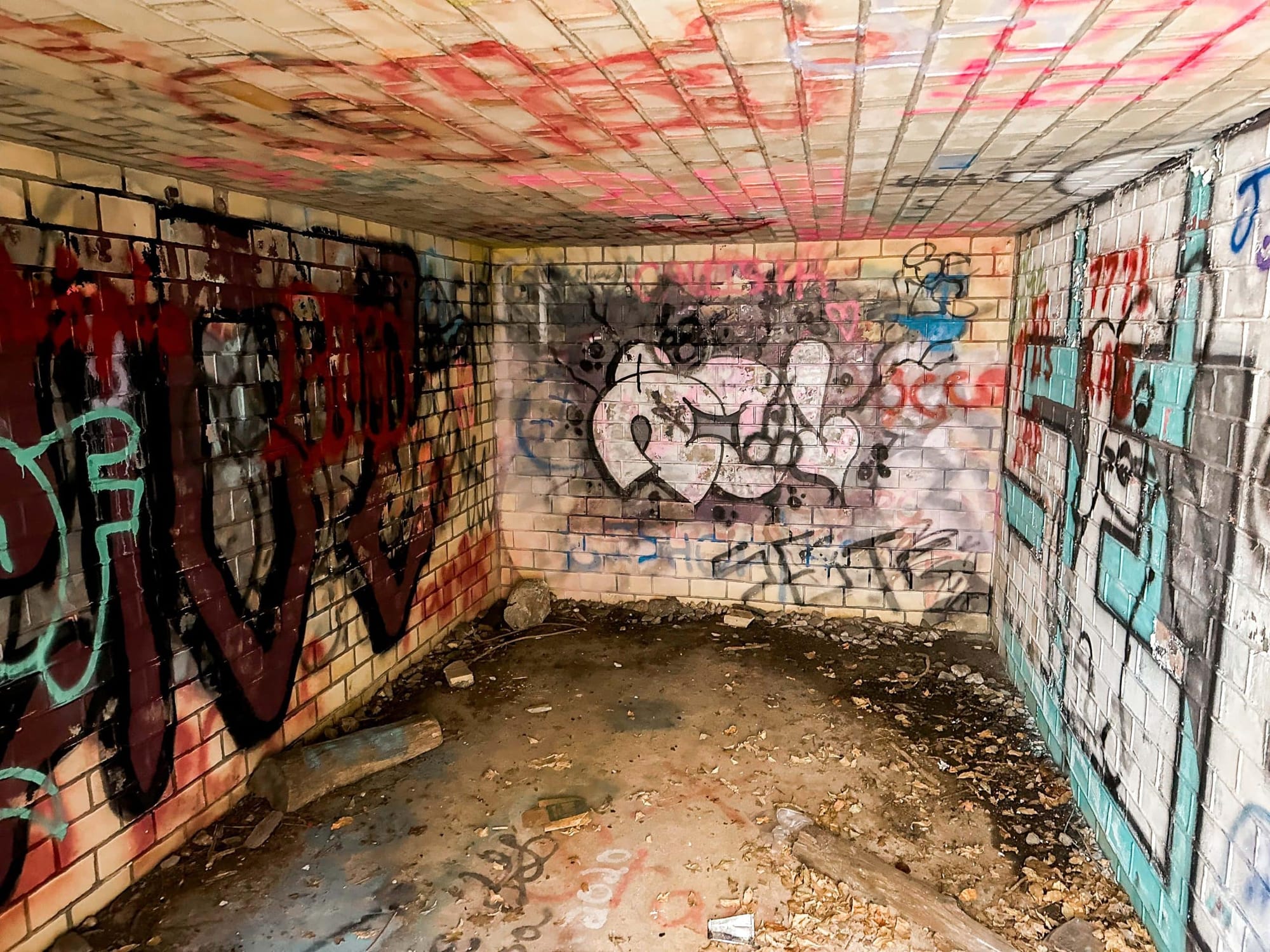
Battery Crittenden Today
Today, Battery Crittenden lies quietly within Fort Wetherill State Park, which opened to the public in 1972. It’s one of seven surviving gun batteries within the park — all part of a vast network of early-20th-century fortifications that once guarded Narragansett Bay.
Visitors can freely walk atop the structure or explore its interior, including the atmospheric fire-control post on the west side. Open stairways lead between levels, and many rooms remain accessible. However, as with other abandoned batteries, it’s essential to explore cautiously — the concrete floors can be slick, and much of the site is covered in colorful graffiti that now defines its urban-exploration charm.
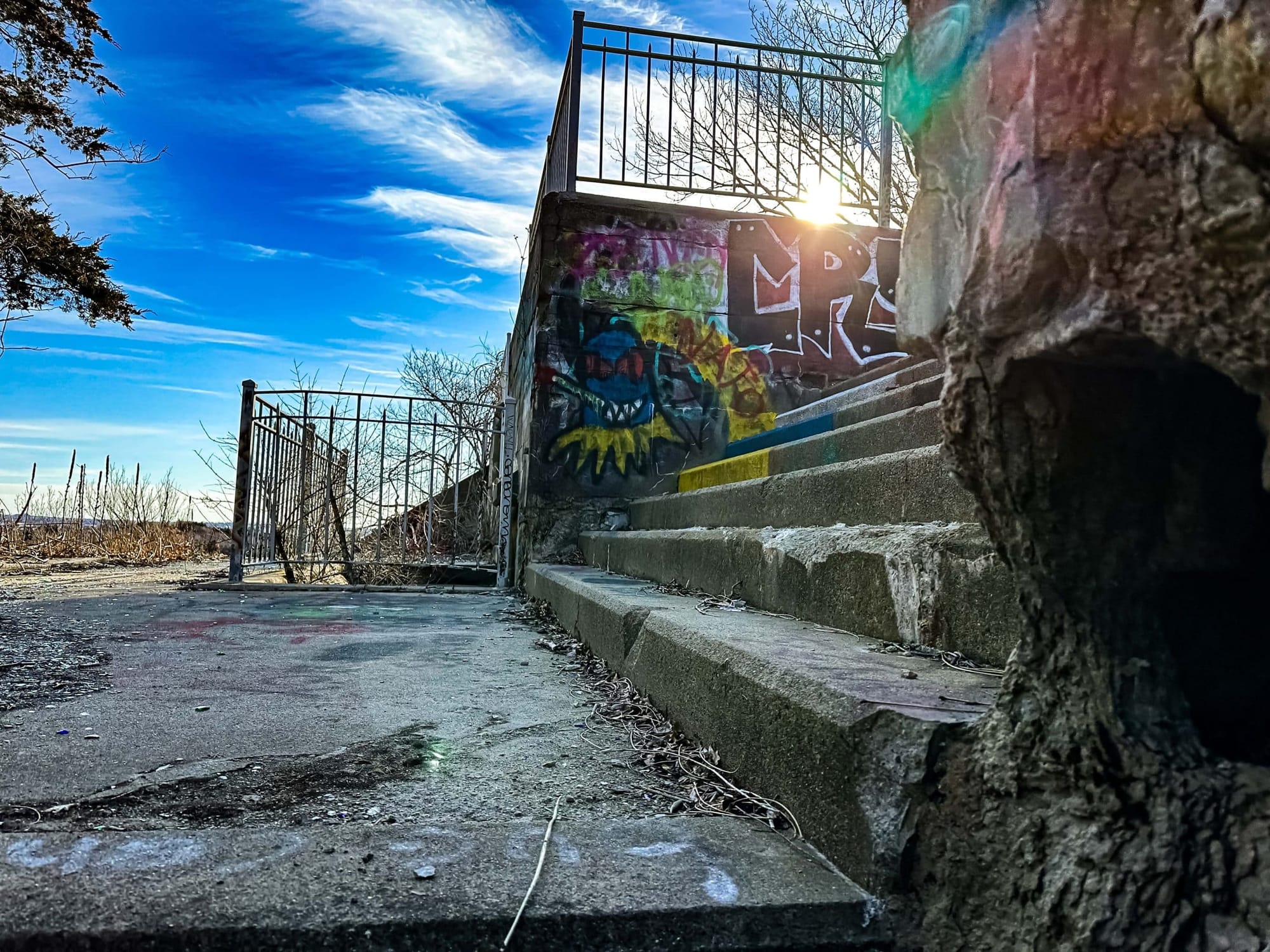
Visiting Battery Crittenden
Fort Wetherill State Park offers ample parking, scenic walking paths, and sweeping views of Narragansett Bay. Battery Crittenden sits near the first major parking area along Fort Wetherill Road, making it one of the easiest batteries in the park to locate.
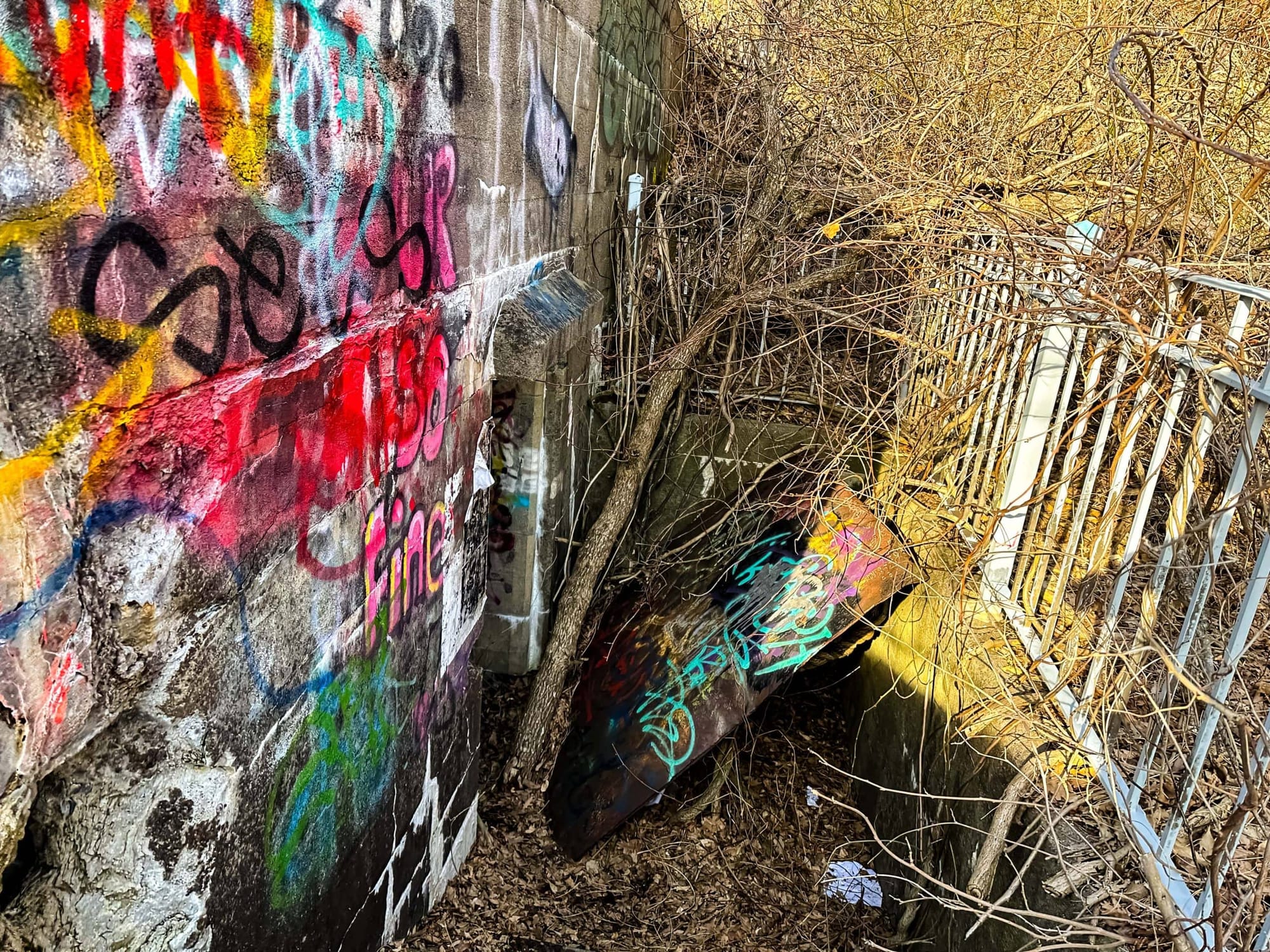
Visitor Details
- 📍 Address: Fort Wetherill Road, Jamestown, Rhode Island
- 🌐 GPS Coordinates: 41.478528, –71.364917
- 🅿️ Parking: Large paved lots with hundreds of free spaces year-round
- ⏰ Hours: Park open daily from dawn to dusk
- 💬 Tip: Bring a flashlight if you plan to explore interior rooms — and always watch your step.

Why Battery Crittenden Matters
Though silent now, Battery Crittenden represents an era of innovation that reshaped America’s coastal defense strategy. Its concrete corridors and open gun platforms capture the tension of a time when the Atlantic coast was lined with fortifications standing watch for threats that never came.
For visitors to Fort Wetherill, the battery offers a perfect blend of military history, architectural intrigue, and ocean-front beauty — a place where Rhode Island’s past meets its wild, coastal present.
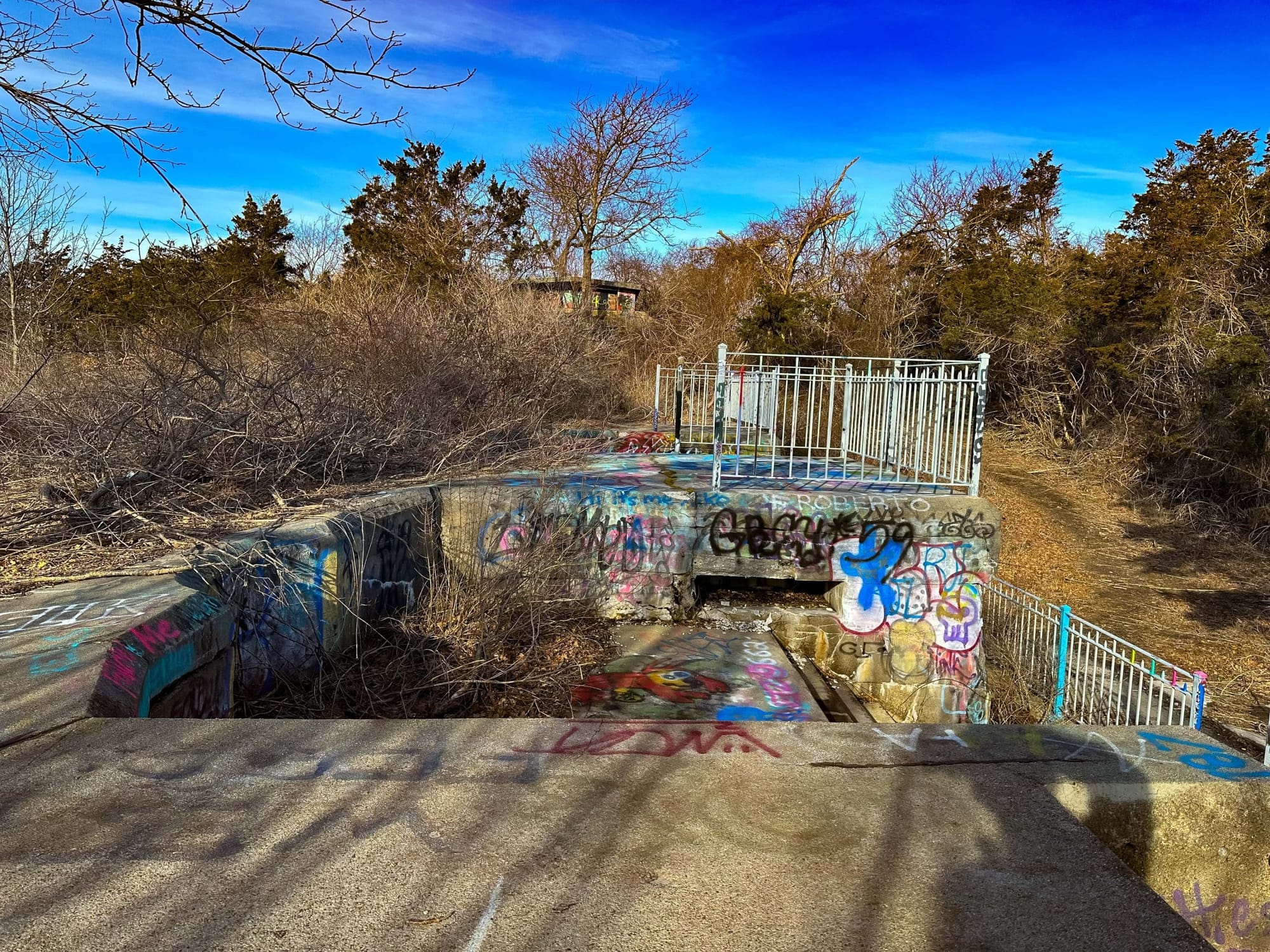
Quick Facts
- 🏗 Construction: June 1901 – July 1902
- ⚙️ Armament: Two 3-inch M1902 guns → Replaced by M1903 guns in 1925
- 💰 Cost: Not recorded (typical Endicott budget ≈ $15k–$20k per battery)
- 🕰 In Service: 1908 – 1946
- 🪖 Named For: 2nd Lt. John J. Crittenden (killed at Little Bighorn, 1876)
- 🏞 Now Part Of: Fort Wetherill State Park (est. 1972)
- 🎨 Condition: Abandoned / Graffiti-covered but accessible
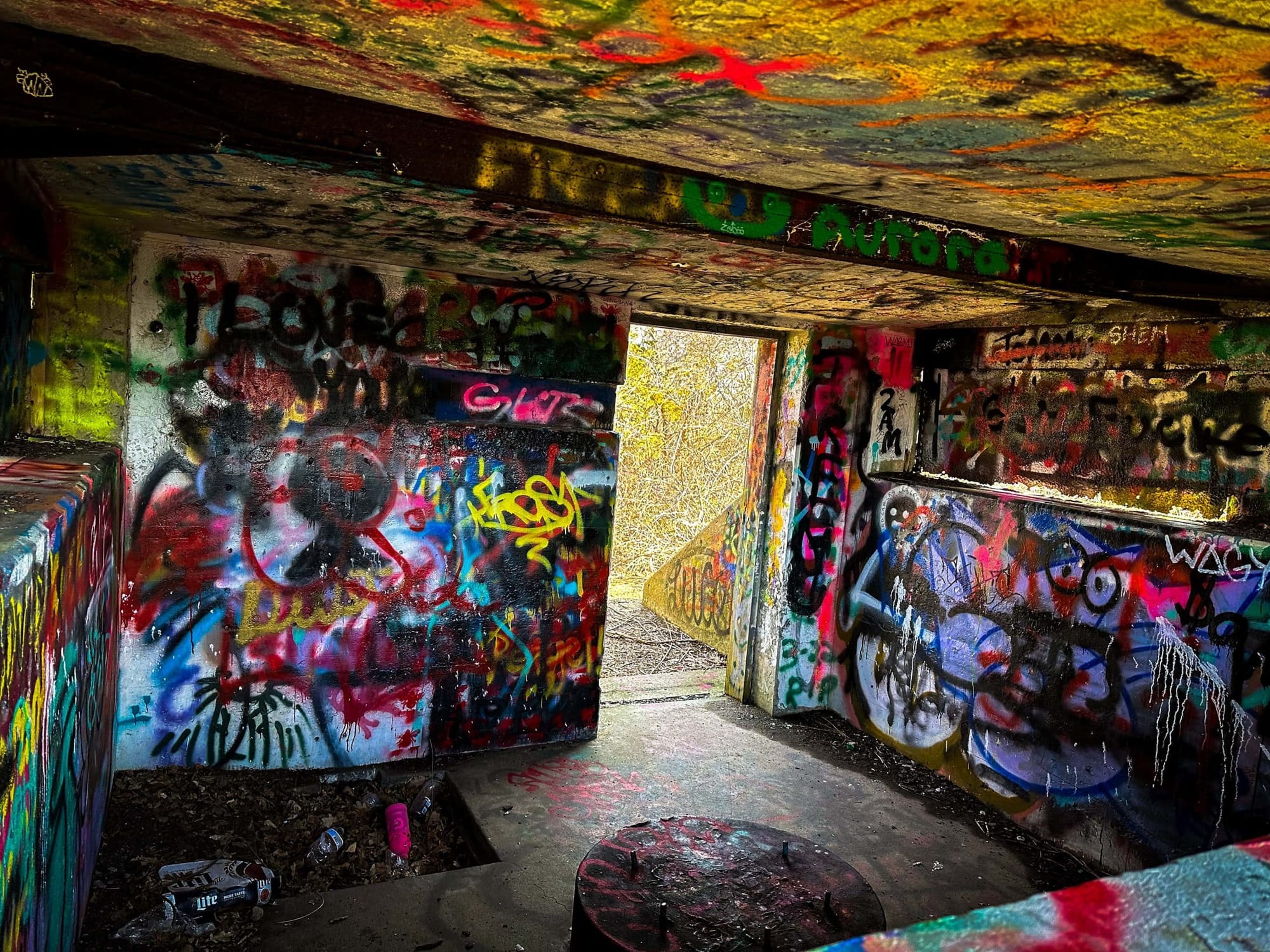
Final Thoughts
Whether you’re drawn by history, architecture, or adventure, Battery Crittenden is a must-see stop at Fort Wetherill State Park. Its echoing passageways and cliff-top views capture both the grandeur and the impermanence of Rhode Island’s coastal fortifications — a reminder that even concrete cannot stand forever against the sea.

